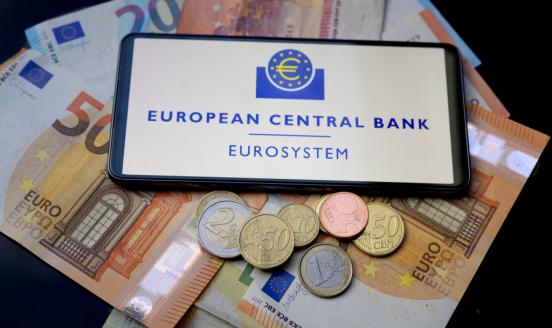Central banking’s brave new world
Ever since the 2008 financial crisis, central bankers have been busy developing new policy instruments to fight fires and ward off emerging threats. N
This opinion piece was originally published in Project Syndicate.

Twenty years ago, central bankers were proudly narrow-minded and conservative. They made a virtue of caring more about inflation than about the average citizen, and took great pains to be obsessively repetitive. As future Bank of England (BOE) Governor Mervyn King said in 2000, their ambition was to be boring.
The 2008 financial crisis abruptly dashed that objective. Ever since, central bankers have been busy developing new policy instruments to fight fires and ward off emerging threats. Nonetheless, many secretly dreamed of returning to the good old days of cautious conservatism (with financial stability taken seriously).
But recent announcements by the US Federal Reserve and the European Central Bank suggest that there is no going back. Central bankers are now keen to take on responsibility for policy objectives they previously shied away from – in particular, tackling inequality and climate change.
Start with inequality. If there was a red line in the delineation of responsibilities between elected and unelected officials, it was that distributional, give-and-take choices belonged solely to the former.
Yet, the Fed has announced that it will now pay attention to “shortfalls” of employment from its maximum level, instead of “deviations,” as previously. According to Chair Jerome Powell, the main reason for this change is the realisation that a tight labour market benefits low-income communities and ethnic minorities. Only when the aggregate unemployment rate is very low do those on the fringes of the labour market benefit from significantly better access to jobs and higher wages.
Policymakers have long known that a high-pressure economy benefits the unskilled and minorities, and the Fed is special in having a dual congressionally assigned mandate of achieving both price stability and full employment. What is new is that instead of defining its own tasks in purely macroeconomic terms, the Fed has now indicated a willingness to take part in a collective anti-poverty effort.
The reason, the Fed says, is that listening to citizens has convinced it of the heterogeneity of the US labour market and the benefits of testing the downward limits of unemployment. But in yesterday’s world, the Fed was proud to be insulated from politics and therefore not to listen to citizens.
The ECB has not completed its policy review yet. But it is unlikely to draw the same conclusions. Whereas the Fed can regard higher inflation in Colorado as an acceptable price to pay for a tight labour market in Mississippi, the ECB cannot operate the same way. European countries have limited appetite for such solidarity. Instead, what European central bankers are increasingly considering is support for climate action.
The ECB is not entering new territory here. In a landmark 2015 speech, then-BOE Governor Mark Carney emphasised the financial-stability risks arising from climate change and the responsibility they imposed on regulators. This insight made climate risks a topic of concern for financial-system supervisors.
But today’s eurozone central bankers are going further. ECB President Christine Lagarde has said she intends to “explore every avenue available in order to combat climate change,” while fellow board member Isabel Schnabel has alluded to excluding brown bonds from monetary-policy operations. And Banque de France Governor François Villeroy de Galhau has suggested applying a carbon-related haircut to assets accepted as collateral.
Favouring green assets would imply a departure from the market neutrality that ensures maximum monetary-policy effectiveness. It would also cross another red line by turning the ECB into the implementer of a policy for which it has no other mandate besides the general clause that, subject to maintaining price stability, the central bank supports the policies of the EU.
To orthodox critics, this is anathema. The Hoover Institution’s John Cochrane (who is no climate-change denier) accuses the ECB of engaging in self-defined mission creep. Bundesbank President Jens Weidmann is notably unenthusiastic. And the Fed itself is much more cautious than its European counterpart regarding climate action.
It is no accident that both the Fed and the ECB are venturing into new terrain. With inflation having vanished, at least temporarily, neither institution wants to be the high priest of a forgotten deity. Their quasi-parallel moves are indicative of the tectonic shifts currently affecting civil societies, and illustrate the desire of independent policy institutions to remain attuned to social preferences in order to retain their legitimacy.
But these moves entail risks. The Fed is now caught in a bind between its own commitment to testing the lower limits of unemployment and the disregard of President Joe Biden’s administration for the dangers of providing too much economic stimulus. It may have tied its hands at the wrong moment.
As for the ECB, the financial-stability justification for greening its policies is only partially convincing. Green bubbles are a threat, too. And there is also financial-stability risk in extending credit to firms that invest in decarbonised technology on the assumption that governments will set the carbon price high enough to make these investments profitable in the future. Governments often fall short of fulfilling their promises.
This is not to say that central banks should do nothing. Inequality and the climate emergency are immense challenges that policy institutions cannot overlook. But explicitly amending the central banks’ missions would be preferable to letting monetary policymakers decide how their tasks should evolve.
This especially applies to the ECB, which has an extremely narrow price-stability mandate under the EU Treaty (the Fed, in addressing inequality, arguably remains within its mandate). Because EU treaties are so difficult to amend, the ECB is right to explore and experiment. But decisions about what aims the institution serves should ultimately rest with its principals – the member states.



